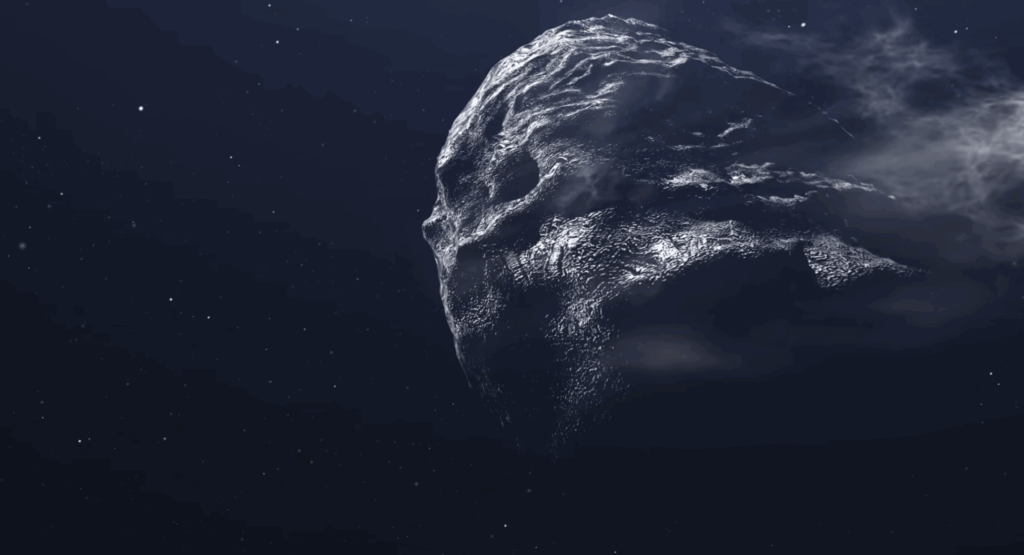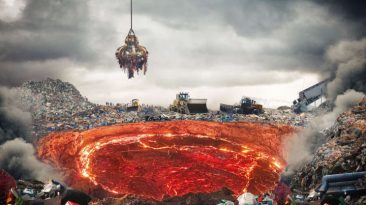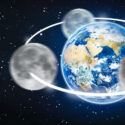Meet comet 3I/Atlas.
A collision with this rock would release the same kind of energy that a certain other asteroid did 66 million years ago, ending the reign of the dinosaurs and killing nearly everything on Earth. This means that if 3I/Atlas struck Earth today, we’re talking an extinction-level event.
Now, to better understand 3I/Atlas, let’s take another look at Oumuamua.

Oumuamua was the first object we’ve ever confirmed to be visiting us from outside our Solar System. Roughly translated from Hawaiian, Oumuamua means ‘a messenger from afar arriving first’. Which is quite fitting… because it’s literally ‘from afar, arriving first’… at least, to us Earthlings.
But don’t worry, it won’t actually hit Earth, ever.
First off, 3I/Atlas is from a very different part of space than Oumuamua. It looks like 3I/Atlas originated in the Milky Way’s thick disk of stars. Which means there’s a high chance that 3I/Atlas is OLDER THAN OUR SOLAR SYSTEM.
Quite possibly billions of years older, born in a region of primeval stars formed in an ultra-violent era of the galaxy’s past. While every object in our Solar System is a maximum age of about four and a half billion years, Atlas could easily be seven billion years old. Or more. This may be the oldest object we’ve ever observed in our Solar System.
The good news is… it’s NOT going to hit Earth.
At its closest point, in December 2025, 3I/Atlas will still be 1.8 astronomical units from our pale blue dot. That’s still 270 million kilometers (170 million miles) off-base. But on an astronomical scale, it’s not THAT far off. Atlas is still going to pass within Mars’ orbit and miss it by just 28 million km (18 million miles). That’s less than a quarter of the distance from Earth to Mars.

We at What If think about aliens a lot, too, but this isn’t a mothership module. 3I/Atlas is just a really big, ancient comet that’s swinging through our Solar System at an incredible speed.
And now, to the part of the story you’ve been waiting on. The impact.
Three simple words. Say them with me now: Extinction. Level. Event.
A 3I/Atlas strike would produce a shockwave thousands of kilometres across whatever ocean or continent it struck. If it struck near a landmass, like Chicxulub did, it would create super-hurricane-level winds. I’m talking speeds of 1,000 km/h (620 mph). These are hurricanes that would destroy forests and cities. And the blast would launch trillions of tons of molten material into the atmosphere. It would burn every tree on the continent and set every forest on the planet on fire.

High waves would flood the continents, moving 100 km (62 mi) inland. Rubble would fall from the sky, and land would slide into the sea. Everything on the side of the planet that was struck would be toast.
After that, the impact would cause worldwide earthquakes that register beyond the Richter scale, volcanic eruptions and… even more tsunamis.
And then, after the fires burned out, things would get real quiet. But not in a good way.
The planet would also face the destruction of the ozone layer, and even toxic metal poisoning from all the material raining back down to it. Now, once that all settled, after a few years, things might actually start to get hot. That’s because since Atlas is made of carbon dioxide ice, all that ice would vaporize when the comet hit the ground.
But Earth wouldn’t heat up right away. Only much later, when the skies finally clear, would the leftover carbon dioxide start trapping heat and push the climate back in the other direction. So, first a deep freeze, then a long, scorching recovery. Not that you’d be alive to witness any of it.
In short, if 3I/Atlas struck Earth, it would be a global mass extinction. Enormous loss of life, species, entire countries and continents. I mean… it would probably be a good time to be on the International Space Station. Though… getting home might be a problem. After all the armageddon.
Now, the good news is… like I said, 3I/Atlas isn’t actually going to come anywhere near us. It’s a little sad, because studying this older than the Solar System comet up close would be huge. Telescopes on Earth don’t have a great angle on it against the Sun to be able to study it from a distance.


















